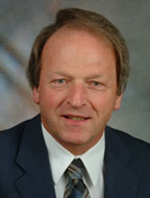Gerd Hirzinger: Difference between revisions
N.w.brewer (talk | contribs) No edit summary |
No edit summary |
||
| Line 9: | Line 9: | ||
An [[IEEE Fellow Grade History|IEEE Fellow]], he received Diplom-Ingenieur and doctorate degrees from the Technical University of Munich, Germany. | An [[IEEE Fellow Grade History|IEEE Fellow]], he received Diplom-Ingenieur and doctorate degrees from the Technical University of Munich, Germany. | ||
[[Category:Robots]] | [[Category:Robots|Hirzinger]] [[Category:Aerospace and electronic systems|Hirzinger]] [[Category:Space vehicles|Hirzinger]] | ||
[[Category: | |||
[[Category: | |||
Revision as of 21:14, 18 January 2012
Biography
Gerd Hirzinger, director of the Institute of Robotics and Mechatronics at the German Aerospace Center in Wessling, Germany, is best known for his work in advancing robotic space exploration. He developed ROTEX, the first remotely controlled space robot that flew aboard the space shuttle Columbia in 1993. The robot featured a multisensory gripper that allowed ground control based on “shared autonomy”. Along with his co-workers he teleoperated and teleprogrammed Japan’s ETS VII, the first free flying space robot, in 1999.
Since 2005, he has a small double-joint torque-controlled manipulator ROKVISS on the outside of the international space station ISS, thus demonstrating telepresence with stereo video and force feedback on one side and qualifying lightweight joints for space on the other side. His space mouse – originally developed for ROTEX teleoperation has become the most popular 3D input device. More recently he and his co-workers have developed and commercialized surgical robots, artificial organs, load-reducing aircraft control and innovative brake by wire systems for vehicles.
An IEEE Fellow, he received Diplom-Ingenieur and doctorate degrees from the Technical University of Munich, Germany.
